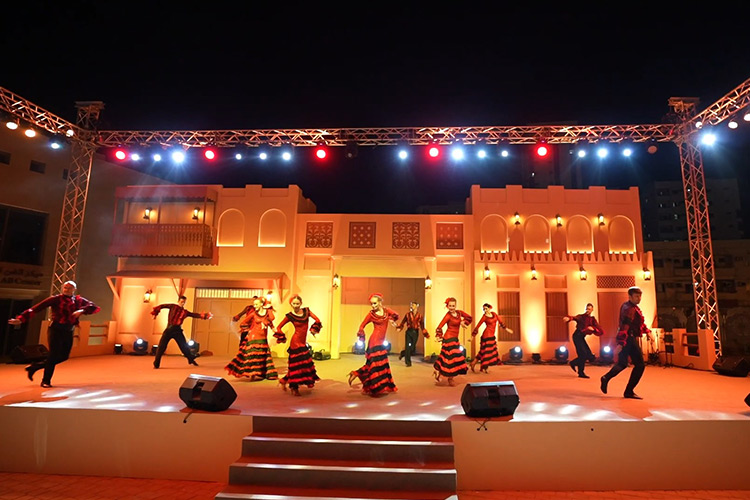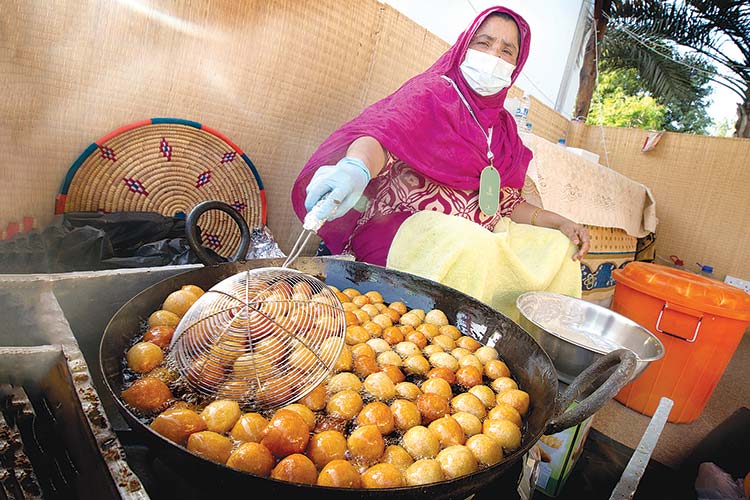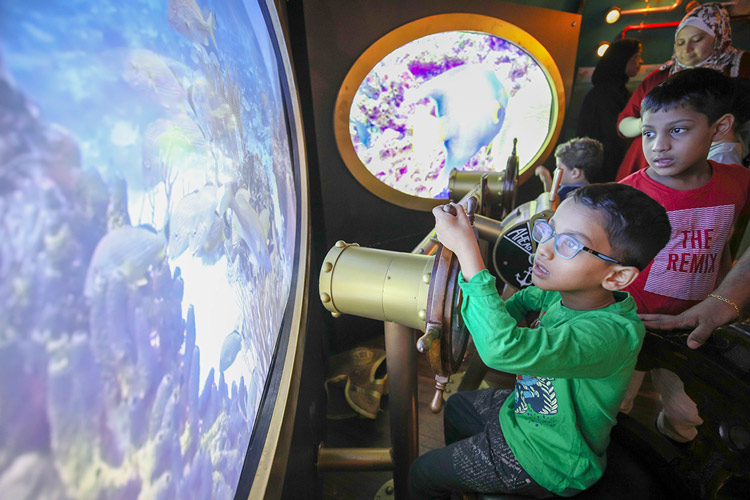Flamenco dancing comes alive during Sharjah Heritage Days

The fiery dance of flamboyance, fluidity, passion and drama is one of Spain’s great cultural hallmarks.
Gulf Today, Staff Reporter
Flamenco dancers from the south of Spain enthralled audiences at the ongoing Sharjah Heritage Days (SHD), which is celebrating the UAE’s and global cultures over a period of three weeks.
Showing off Spain’s traditional energetic flair, wearing red and black ruffled costumes, the troupe presented technically detailed routines to vibrant music. This fiery dance of flamboyance, fluidity, passion and drama is one of Spain’s great cultural hallmarks, bringing together rhythm, dancing with hand claps, and music.
The cultural festival also features plenty of other vibrant folk performances from the UAE, Macedonia, Tajikistan, Kazakhstan, and the Republic of Montenegro, amongst others.
KAZAKH ATTRACTIONS: A variety of souvenir gift items such as magnets depicting the beautiful flat steppes, dolls in colourful festive costumes, nature-inspired embroidery designs on bags in felt and suede, handmade pastel shawls in silk and wool, and little wooden curios imbue the spirit of the Kazakh land, offering visitors of the ongoing 18th edition of Sharjah Heritage Days (SHD) an insight into the culture, traditions and craftsmanship of this central Asian country.
“The tradition of handicrafts in Kazakhstan is closely related to breeding of farm animals; hence, wool is the chosen fabric for many of our craft forms,” explains Gulnar, who resides in the capital city, Nur Sultan.

Animal figures made in sheep wool are perfect toys for children as the material is organic and child-friendly, she says. The stand also features Kazakh peasant dolls in traditional clothing and dolls in festive wear.
A characteristic feature of Kazakh folk art is keste or hand-embroidery, crafted with multi-coloured threads. “The motifs used here are deeply symbolic,” explains Gulnar. “Images could be abstract or inspired by nature depicting flowers, birds and trees. They have a rhythm to it and follow an ornamental pattern.”
Handmade silk and chiffon wraps, in both soft and bright shades, bear testament to the art of wet felting.
A basketful of bright red apples in felt represents the city of Almaty, said to be the origin of the cultivated apple. ‘Alma’, which means apple, is famous for its sweet and deliciously crisp apples, says Gulnar.
Velvet ‘takiya’ or the skullcap worn by men feature luxurious gold embroidery. “In traditional Kazakh culture, caps not only protected against the cold weather but were also said to ward off evil spirits.”
Exemplifying the wood craft traditions of Kazakhstan are an exquisitely crafted chess set with handpainted pieces and little wooden yurts. Open the circular frame of the nomadic dwelling and you will find a family of handpainted miniature figures.







